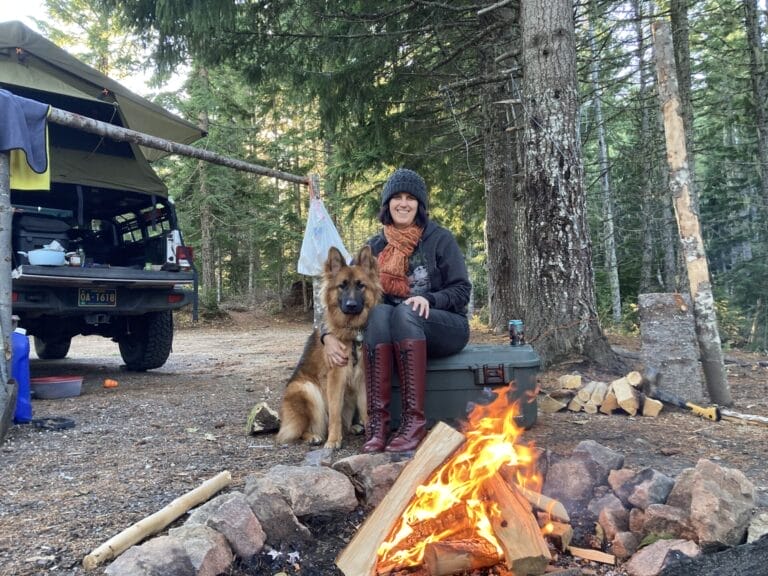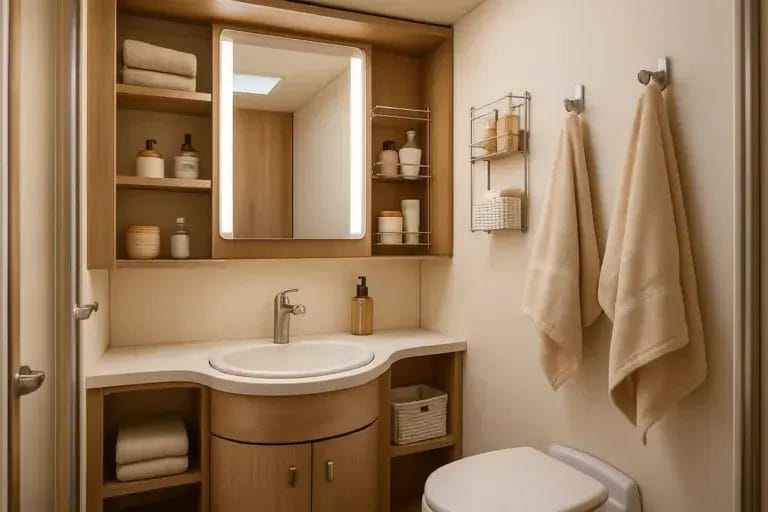How Much Does Camping Cost? A Budget-Friendly Guide
I remember planning my first camping trip and frantically Googling “how much does camping cost” at 2 AM, worried I’d blow my entire budget on a weekend in the woods. The truth is, camping costs can swing wildly depending on your style and destination.
The average camper spends about $50 per person per day on camping trips, but you can camp for free on public land or spend hundreds on luxury glamping experiences.
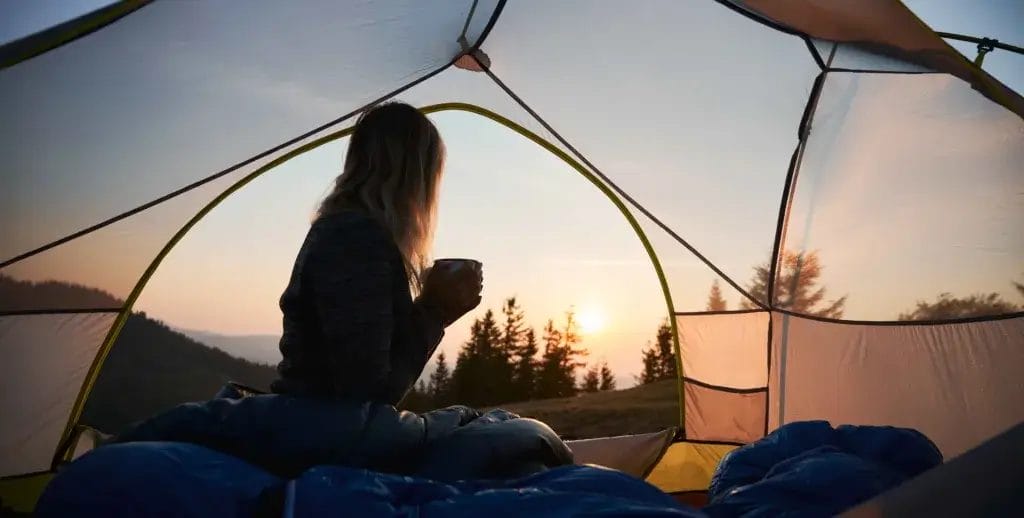
I’ve been camping for years now, everywhere from free dispersed sites to fancy RV resorts, and glamping. I’ve figured out that camping costs range from $10 to $50 per night for basic sites. Gear investments can span from $170 for secondhand essentials to over $4,000 for glamping setups.
The real surprise? Most of your camping budget goes beyond just the campsite fee.
Key Takeaways
- Camping costs average $50 per person daily but range from free dispersed camping to expensive glamping experiences
- Initial gear investment of $170-$4,000 pays off over multiple trips since equipment lasts for years
- Food, transportation, and permits often cost more than campsite fees themselves
Understanding Camping Costs
When I first started planning camping trips, I was surprised by how much the expenses could vary. Your camping budget depends on several key factors, including your camping style, trip length, and group size.
Costs can range from as little as $50 for a weekend tent trip to over $1,000 for a week-long RV adventure.
Key Factors Affecting Your Camping Budget
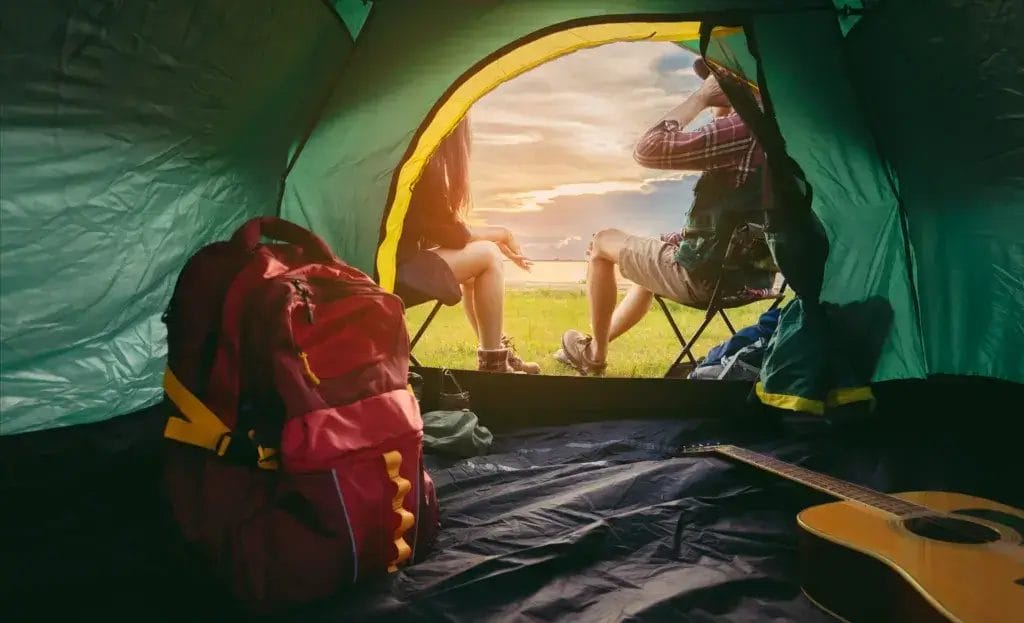
Location is the biggest factor in camping expenses. National parks typically charge $15-35 per night, while state parks run $10-30.
Private campgrounds can cost $25-75+ per night, depending on amenities. Seasonality plays a huge role, too.
I always save money by camping during off-peak times when fees are lower and crowds are smaller. Your gear situation dramatically impacts costs.
If you’re starting from scratch, expect to spend $300-3,000+ on equipment. When I first started, I borrowed almost everything and kept costs under $100.
Transportation is another major expense. Nearly one-third of campers save money by camping close to home, with the average camper traveling only 179 miles from home.
Gas, tolls, and vehicle maintenance add up quickly on longer trips. Don’t forget to factor in the cost of snacks for the drive.
Comparing Camping Styles and Their Expenses
Tent camping remains the most budget-friendly option. I can usually keep a weekend tent camping trip under $150, including campsite fees, food, and gas.
RV camping is significantly more expensive. A week-long RV adventure can easily exceed $1,000, with rental costs alone running $500-1,500+ per week.
Backpacking offers a middle ground. While lightweight gear costs more upfront, campsite fees are often lower or free in backcountry areas.
Car camping gives you the best of both worlds: tent camping convenience with the ability to bring more gear and food, keeping costs reasonable.
Glamping is the priciest option, with luxury tents and cabins often costing $100-300+ per night. I once splurged on glamping and, wow, my wallet felt it for weeks. It was fun though!
How Trip Duration and Group Size Impact Costs
Trip length affects your camping budget in interesting ways. Longer trips spread fixed costs like transportation and gear over more days, reducing your per-day expenses.
Food costs scale directly with trip duration. I typically budget $15-25 per person per day for camping meals, but cooking group meals helps reduce individual costs.
Group size can dramatically lower per-person expenses. Splitting campsite fees, gas, and food costs among four people instead of two cuts individual camping costs nearly in half.
Larger groups also allow gear sharing. My camping group has developed a system where different people bring different equipment, reducing everyone’s gear investment and packing load.
Types of Camping and Their Price Ranges

Different camping styles come with vastly different price tags, from tent camping that costs as little as $20 per night to luxury glamping that can run hundreds of dollars. I’ve tried them all, and each offers unique benefits that match different budgets and comfort levels.
Tent Camping: The Budget-Friendly Classic
Tent camping remains my go-to choice when I want to keep costs low without sacrificing the authentic outdoor experience. A basic tent site typically runs $10-$30 per night at most campgrounds, making it the most affordable option for families and solo adventurers alike.
The beauty of tent camping lies in its simplicity. You’ll need basic gear like a tent, sleeping bags, and a camp stove, but once you own these items, your ongoing costs stay minimal.
Essential tent camping gear costs:
- Basic tent: $50-$200
- Sleeping bags: $30-$150 each
- Camp stove: $20-$100
- Cooler: $20-$100
State parks and national forests offer the most affordable tent camping options, with many sites providing fire rings, picnic tables, and basic restrooms.
Private campgrounds cost more but often include amenities like showers and camp stores.
RV Camping: Comfort With a Cost
RV camping can transform your outdoor adventures, but it comes with a higher price tag. RV campsite fees range from $25-$75 per night, depending on amenities and location.
The biggest expense is the RV itself. Renting costs $100-$300 per day, while buying ranges from $20,000 for a basic travel trailer to $500,000+ for luxury motorhomes.
RV parks and RV resorts offer different experiences and prices. Basic RV parks provide hookups for water, electricity, and sewer.
Luxury RV resorts include pools, fitness centers, and organized activities. It’s easy to get carried away with all the extras. I’ve definitely fallen for the pancake breakfast more than once.
Weekly RV camping costs typically include:
- RV rental/payment: $500-$1,500+
- Campsite fees: $200-$500
- Gas: $200-$400
- Propane: $20-$50
I’ve found that RV camping works best for longer trips where the daily cost evens out. The convenience of having your own bathroom and kitchen makes it worthwhile for many families.
Glamping: Luxury in the Wild
Glamping lets you experience nature without giving up comfort, but expect to pay resort prices. My first glamping experience cost $200 per night, which seemed steep until I saw the king-size bed and private bathroom.
Most glamping sites provide furnished tents or cabins with real beds, electricity, and often private bathrooms. Some include meals, outdoor activities, and spa services.
Glamping price ranges:
- Basic glamping tents: $100-$250 per night
- Luxury safari tents: $200-$500 per night
- Glamping cabins: $150-$400 per night
- High-end glamping resorts: $300-$1,000+ per night
The appeal lies in the hassle-free experience. You arrive with just your clothes and personal items.
Everything else is provided, from linens to camp chairs. Private campgrounds increasingly offer glamping options as a premium service.
These sites bridge the gap between traditional camping and hotel stays. Sometimes I can’t decide if I’m in the woods or a boutique hotel – it’s a weird but fun feeling.
Backpacking and Boondocking: Low-Cost Adventures
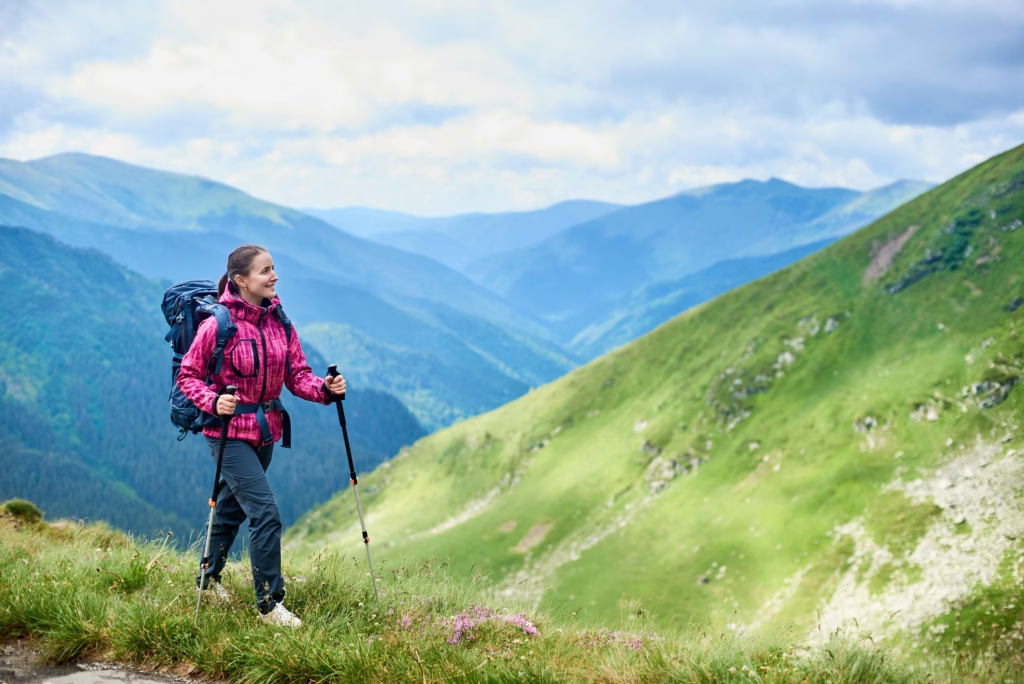
Backpacking and boondocking represent the most economical camping styles, though they require more preparation and self-sufficiency. I’ve spent weeks in the wilderness for less than $50 total.
Backcountry camping typically costs $5-$20 for permits, with many areas requiring advance reservations. The trade-off is carrying everything on your back and camping in pristine wilderness areas.
Boondocking means camping without hookups, often on public lands. Many Bureau of Land Management areas allow free camping for up to 14 days.
Low-cost camping strategies:
- Dispersed camping on public lands: Free
- National forest campgrounds: $10-$25 per night
- State park primitive sites: $5-$15 per night
- BLM long-term visitor areas: $40-$180 for seasonal passes
The key to successful boondocking is having the right gear. Solar panels, water storage, and portable toilets become essential investments.
While initial gear costs are higher, the ongoing expenses are minimal. Hauling water jugs and finding a good spot can feel like a scavenger hunt, but that’s half the adventure.
Campsite Fees Across Destinations
When I started planning my camping adventures, I quickly learned that campsite costs vary dramatically depending on where you pitch your tent. State parks offer budget-friendly escapes, and national parks provide incredible value despite entrance fees.
Private campgrounds deliver premium amenities at higher prices. Sometimes you just want a hot shower after a muddy hike, and that’s when those extra dollars feel worth it.
State Parks: Affordable Nature Retreats
State parks have turned into my go-to for budget-friendly camping that doesn’t skimp on natural beauty. I’ve noticed that state park campgrounds usually cost $25-$45 per night, which makes longer trips totally doable.
What keeps me coming back to state parks is their reliable setup. Most sites come with basics like picnic tables, fire rings, and restrooms.
The facilities stay in pretty good shape, and you still get that real-deal outdoor vibe. It feels authentic, not overdone.
One thing that surprised me at first was the resident vs. non-resident pricing. Some states charge out-of-state campers an extra $5-30 a night.
Oregon, for example, bumps up the price 25% if you’re not a local. It adds up fast if you’re road-tripping across state lines.
Additional fees to watch for:
- Park entrance fees (sometimes not included with camping)
- Parking permits
- Reservation fees
I always check if a state offers annual passes now. If you’re planning several visits or a long stay, those passes can save you a surprising chunk of change.
National Parks and Entrance Fees
National parks offer some of the best camping deals I’ve found. Most campgrounds run $20-$30 a night, and waking up to views like the Grand Canyon or Glacier? Priceless.
The catch: park entrance fees are separate. Daily passes usually cost $15-30 per vehicle.
I always recommend the America the Beautiful Annual Pass for $80 if you’re hitting more than one park. It pays for itself fast.
I made the rookie mistake at Joshua Tree – got excited about the $20 campsite, then realized I had to pay a $30 entrance fee too. Ouch. Double-check before you go!
Money-saving tip: Seniors (62+) and visitors with disabilities can get passes for 50% off campground fees. My grandpa uses his every year and swears by it.
Private Campgrounds: Perks and Premiums
Private campgrounds have rescued my trips more times than I can count, especially when the public spots are full. Expect to pay $35-$90 a night for private sites, but you get conveniences you won’t find at most state parks.
I’ve stayed everywhere from quirky family-run places to KOA chains. The amenities can be wild: full hookups, WiFi, laundry, pools, and even camp stores.
Some spots honestly feel like mini-resorts. Not complaining!
What drives up private campground costs:
- Full hookups (water, electric, sewer)
- Pull-through vs. back-in sites
- Room for big RVs
- How close you are to attractions
- Peak season and special events
I stumbled onto membership programs like KOA Value Kard by accident. If you camp at chains often, they’re worth checking out for discounts.
Private campgrounds near big attractions, think Dollywood or Disney, charge top dollar. But you’re paying for location and those extra comforts that can make or break a trip.
Essential Camping Gear Costs
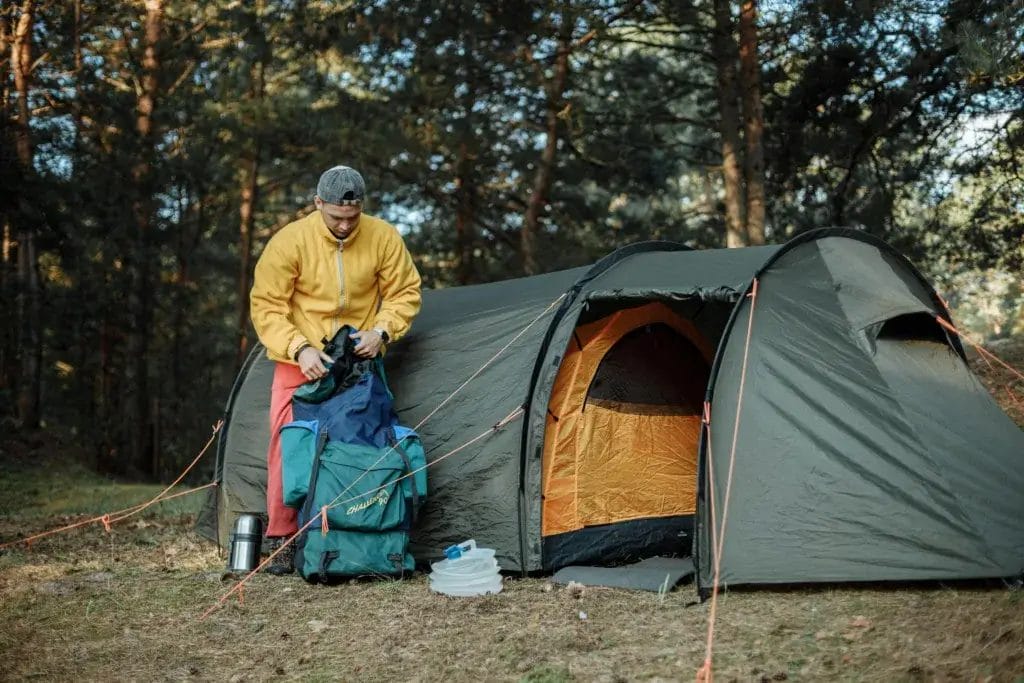
When I first started camping, the gear costs snuck up on me. Basic camping setups can run from $170 for secondhand finds to over $4,000 if you go full-on glamping.
You don’t have to buy it all at once, though. Build your kit slowly, and your wallet will thank you.
Tents, Sleeping Bags, and Pads
My first tent was a $30 garage sale score. It lasted three seasons before finally giving up the ghost.
I’ve seen tents run anywhere from $50 to $600, depending on size and weatherproofing.
Budget tents ($50-$100) are fine for fair weather. I’ve used a basic Coleman dome that held up to light rain, but it wouldn’t survive a windstorm.
Mid-range tents ($100-$300) offer better durability and weather protection. Look for extras like vestibules and color-coded poles. They make setup easier and keep your gear dry.
Premium tents ($300-$600) can sleep a family and handle just about anything. My current 6-person tent has survived five years of family trips and counting.
Sleeping bags are a tricky one. Prices range from $20 to $100, but check the temperature rating before you buy.
I learned that lesson the hard way on a chilly spring night. Now I always double-check.
Sleeping pads run $10 to $150. Foam pads are cheap but bulky, while inflatables are comfy but can pop. I always pack a little repair tape just in case.
Cooking Gear: Camp Stoves, Coolers, and More
My camp kitchen started with a single-burner stove and grew from there. Kitchen basics cost $30 to $200, depending on how fancy you get.
Camp stoves are all over the map. Canister stoves ($15-$40) work great for boiling water. Two-burner propane stoves ($60-$150) let you cook real meals.
I like propane stoves for car camping; they’re simple and reliable. Fuel costs about $3-$5 per canister.
Coolers are a must for keeping food fresh. You’ll pay $20 for a basic soft cooler or up to $500 for a high-end hard-sided one.
My $80 cooler keeps ice for three days, even in the summer. Worth every penny if you hate soggy sandwiches.
Cooking supplies don’t have to be fancy. I started with old pots and pans from my kitchen. Later, I picked up a $50 camping cook set that nests together – way easier to pack.
Don’t forget the little stuff: matches, can opener, sharp knives. They’re easy to overlook, but you’ll miss them if you forget.
Must-Have Accessories: Lighting, Chairs, Rain Gear
Accessories can make or break your trip. Lighting and power gear runs $25 to $200, depending on what you need.
Headlamps are essential for hands-free light. I get one for each camper ($15-$40 each). Flashlights are good backups.
Lanterns light up the whole campsite. LED models ($20-$60) last longer than propane ones. I hang mine from the tent ceiling for reading at night.
Camping chairs are a game changer. Basic chairs cost $15-$30, but fancy ones can hit $140+.
My favorite chair reclines and has a cup holder. I never thought I’d care, but now I wouldn’t go without it.
Rain gear is a lifesaver. Cheap ponchos cost $10-$20. Good rain jackets run $50-$150 and are worth it if you hate being wet and cold.
I once got drenched in a freak storm and learned my lesson. Now I always pack waterproof layers, even if the forecast looks clear.
Travel and Food: Hidden Camping Expenses

The biggest surprise in my camping budget always comes from travel and food. These sneaky costs can double what you planned if you’re not careful.
Transportation and Travel Costs
I learned the hard way on my first long trip that transportation can cost $50to $350, depending on distance.
Gas prices sting, especially if you’re hauling a trailer or loaded down with gear. My truck drops from 25 mpg to about 15 mpg when I tow my little camper.
I always budget for pre-trip car maintenance now. Oil change, tire check, the works. Better safe than stranded.
Here’s what I usually spend before hitting the road:
- Oil change: $30-50
- Tire check/rotation: $20-40
- Emergency roadside kit: $25
Don’t forget about parking fees at trailheads or day-use areas. Some places charge $5-15 just to park for a hike.
Groceries, Meal Planning, and Camp Cooking
Food costs caught me off guard when I started camping. I thought eating outside would be cheap, but poor planning made it expensive fast.
Bringing your own groceries costs about $11 per person per day, pretty similar to eating at home. But you’ll need different supplies than your regular kitchen.
My camping pantry always includes:
- Propane canisters: $3-5 each
- Cooler ice: $2-4 a bag
- Disposable plates/utensils: $10-15
- Aluminum foil and storage bags: $8-12
Meal planning is my secret weapon. I write out every meal and snack, then shop with a strict list. It helps me avoid expensive last-minute runs to the camp store.
A good cooler is key. Mine keeps food cold for four days, which saves me from tossing spoiled groceries.
Firewood and Extra Supplies
Firewood costs surprised me early on. Most campgrounds sell bundles for $5-8, and you’ll burn through two or three bundles a night if you like a good fire.
I tried bringing firewood from home once, but many parks ban outside wood to stop the spread of pests. Always check first, or you might have to buy on site.
Fire-starting supplies add up, too:
- Matches/lighter: $2-3
- Fire starter cubes: $4-6
- Newspaper/kindling: $3-5
Don’t forget camp kitchen extras like paper towels, dish soap, and trash bags. These little things cost $15-20 but make cleanup way easier.
I always pack extra batteries for flashlights and lanterns. There’s nothing worse than fumbling in the dark with a dead headlamp.
Pro tip: I keep a camping supply box at home stocked with these extras. It saves me last-minute store runs and keeps my budget in check.
Money-Saving Tips for Every Camper
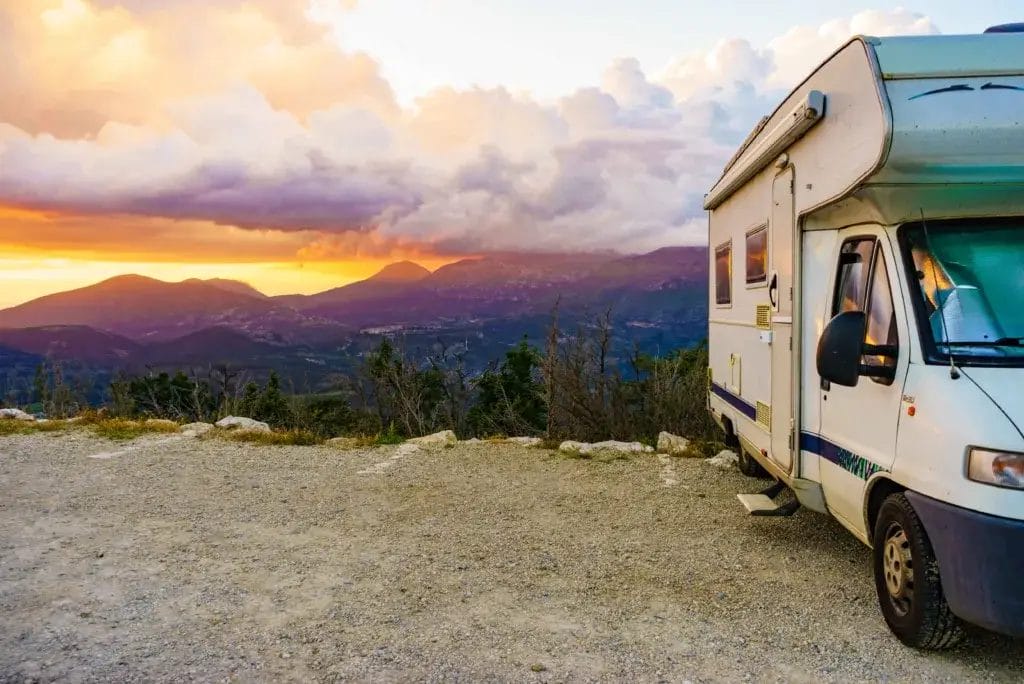
Smart camping isn’t about giving up fun; it’s about making your money stretch further. Over the years, I’ve learned that renting gear, finding free campsites, and booking at the right time can make a huge difference.
Renting vs. Buying Equipment
When I got into camping, I made the rookie mistake of buying everything brand new. My wallet cried, and most of that gear just gathered dust in my garage.
Now I go by this rule: rent first, buy later. For pricey stuff like RVs, big tents, or specialized gear, renting makes way more sense if you’re not camping every weekend.
Items worth renting:
- RVs and trailers
- High-end sleeping bags
- Camping stoves and cooking equipment
- Tents for large groups
Before I buy anything, I check Facebook Marketplace or hit up local yard sales. Last summer, I snagged a barely-used camping stove for $30 – would’ve been $120 new. Not bad, right?
Borrowing from friends is a game-changer. Most folks’ camping gear sits unused for months. My neighbor once lent me his pop-up camper, and honestly, he seemed happier than I was just knowing it was getting some use.
Free and Low-Cost Camping Opportunities
Some of my best camping memories didn’t cost a dime. There’s something magical about a free night under the stars.
Free camping options:
- National forests (dispersed camping)
- Bureau of Land Management areas
- Some state parks during off-season
- Wildlife management areas
State parks usually charge $15-30 a night, while private campgrounds can hit $50-100. I’ve saved a small fortune by picking state parks over the fancier RV resorts.
Off-peak camping is my secret weapon. I’m a big fan of winter camping – sites that cost $60 in July might drop to $25 in January.
Planning and Booking for the Best Deals
Timing can make or break your camping budget. I once paid $80 for a Fourth of July site that’s usually $35. Ouch.
For popular spots, especially national parks, book early. I grab my summer reservations in January when rates are lowest and there’s still plenty of room.
Money-saving booking strategies:
- Skip holiday weekends if you can
- Book longer stays—weekly discounts add up
- Join camping clubs for member rates
- Use camping apps to score last-minute deals
KOA Rewards saves me 10% every visit. The $39 fee pays for itself after just a couple of nights.
I always compare prices on different sites. Sometimes, calling the campground directly gets me a better dealor an unadvertised discount. Never hurts to ask!
Frequently Asked Questions
These are the questions I hear all the time from campers who want to know what they’re really in for, money-wise. Weekend camping costs usually land between $100-$200 depending on your style, but family beach trips and national park adventures can be a different ballgame.
What’s the ballpark figure for a weekend camping getaway with friends?
I’ve organized more of these trips than I can count, and the question always pops up: “How much will this cost?” For a typical weekend, plan on $150-$250 per person if you’re splitting things evenly.
Campsites run $25-$50 a night, but splitting that with friends brings it down to $30-$40 each for the weekend. Not bad for a couple of nights in the wild.
Food can be cheap or fancy, depending on your crew. We keep it simple – hot dogs, burgers, and camp breakfast, so it’s $40-$60 per person for the weekend. If someone wants steak, well, that’s on them!
Gas depends on your drive, but I usually budget $30-$50 per person for trips within 200 miles. Firewood’s another $10-$15 to split.
Sharing gear saves the most. If you can borrow tents and stoves, you might only spend $100-$150 for a full weekend escape. That’s a bargain for the memories you’ll make.
Can you break down the expenses for a family camping trip by the beach?
Beach camping with my family always feels like a real getaway, and the price reflects that. Most beachfront sites charge premium rates, sometimes $40-$80 a night, depending on where and when you go.
California beaches like Morro Bay hit your wallet hardest – $50-$75 a night. On the East Coast, Cape Hatteras is more reasonable at $30-$50. State park beach sites usually cost less than private ones.
Food at the beach is tricky. Sand gets everywhere, and cooking options are limited. I budget $80-$120 for a family of four for the weekend. Beach town groceries can be pricey, so I stock up before we leave home.
Most beach fun is free, sandcastles, swimming, and beachcombing. But if you want to rent boogie boards or umbrellas, tack on another $40-$60.
For a family weekend at the beach, I usually plan for $300-$500. That covers the campsite, food, and maybe a couple of fun rentals.
Is investing in quality camping equipment worth the price for seasonal adventurers?
Let me tell you, cheap gear will let you down. My bargain tent leaked like crazy during a storm, and I learned my lesson fast.
If you’re camping more than three or four times a year, good gear is worth every penny. My first $40 tent lasted two seasons before the zippers broke. The $200 tent I bought five years ago still looks new. Sometimes, you do get what you pay for.
Basic gear ranges from $50-$500+ per item depending on quality. I always suggest buying solid sleeping bags, tents, and stoves first, since they get the most use and make the biggest difference in comfort.
Go for mid-range, not the cheapest, not the fanciest. A $150 sleeping bag will treat you better than a $40 one that leaves you shivering.
If you’re just getting started, budget $800-$1,200 for a complete quality setup. Spread it out, buy one big thing each trip. Your future self will thank you when you’re warm, dry, and not cursing at broken zippers in the rain.
Heading to a national park for camping – what should I set aside budget-wise?
National parks are dream destinations, and I always recommend budgeting a little extra. Campsites usually cost $15-$35 a night in most parks, plus the entrance fee.
Big-name parks like Yellowstone and Yosemite charge $30-$35 nightly. Quieter parks might be $20-$25. Don’t forget the $35 weekly entrance fee, or grab the $80 annual pass if you’ll visit more than one park.
Food can get expensive in national parks. Grocery stores are often far away, and options are limited. I boost my food budget by 30-50% for these trips, especially in places like Glacier or the Grand Canyon.
Gas is a big one. Parks are huge, and you’ll drive a lot, sometimes 30-60 miles just to see the sights. For a week in a national park, I usually set aside $200-$400 for gas.
For a weeklong family trip, budget $600-$1,000. That covers camping fees, park entry, food, gas, and maybe one special splurge, like a guided hike or boat rental. Totally worth it for those epic sunrise views.
How do the costs compare for backyard camping versus an out-of-state nature retreat?
Backyard camping is kind of my go-to move when I want to try out new gear or just keep the kids entertained. It’s ridiculously affordable, usually the only thing I spend money on is food, maybe $20-$40 for s’mores stuff and a hearty breakfast.
I love using backyard camping as a gentle intro for friends who aren’t sure about sleeping under the stars. No campsite fees, no long drives, and if you forget your pillow, well, the house is right there. It’s ideal for anyone who wants to dip their toes in before committing to a full-blown adventure.
Out-of-state retreats, though, are a whole different animal. Transportation costs become major expenses when you’re driving 500+ miles just to get there.
I’ve had trips where I spent $300-$500 just on gas. And that’s before you even factor in campsite fees, out-of-state park permits, or those sneaky higher food costs that always seem to pop up.




